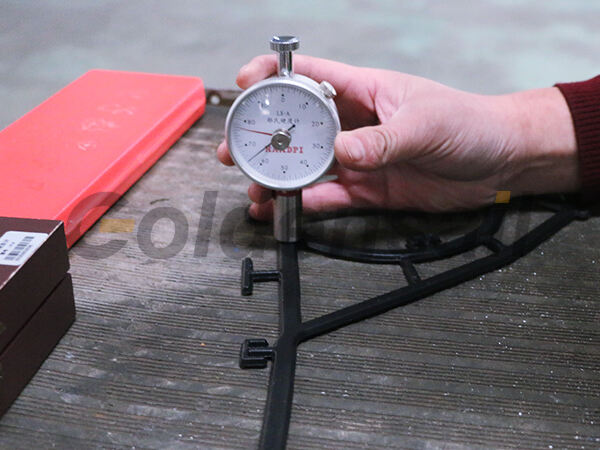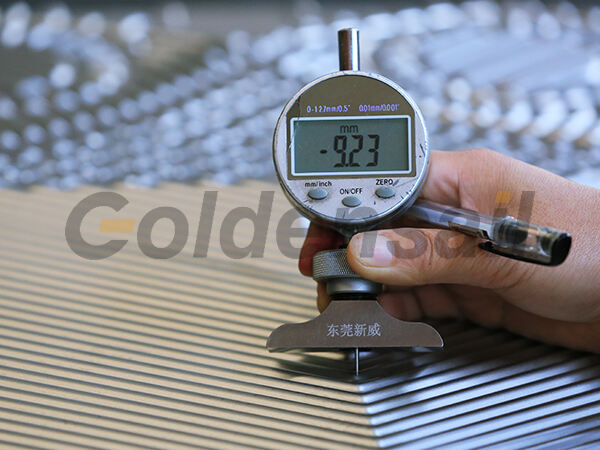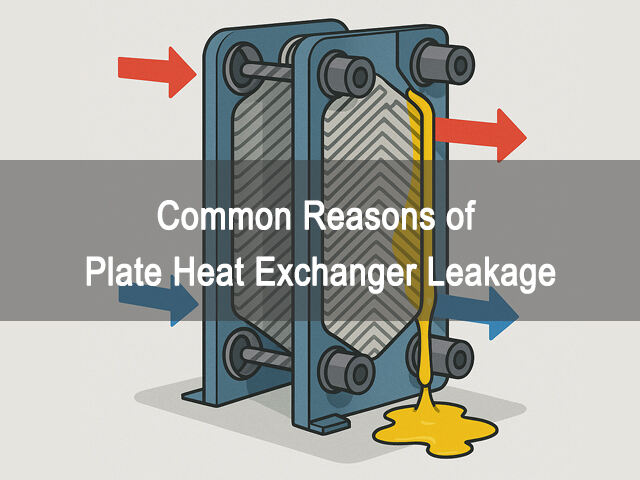Plate heat exchangers are widely used in various industrial systems due to their efficient heat transfer performance and compact structure. However, during long-term operation, the equipment may experience leakage problems, which not only affect system efficiency but also pose safety hazards. This article will summarize the common causes of plate heat exchanger leakage to help users better maintain and prevent it.
The sealing gasket is a key component of the plate heat exchanger, preventing medium leakage, and directly affects the sealing performance of the equipment. After under high temperature and high pressure environment, the gasket will gradually lose its original flexibility and sealing performance. If the tightening torque is uneven or the gasket is misplaced during installation, it is easy to cause local leakage. Some chemical media will corrode the gasket material and shorten its service life. Operation beyond the design temperature and pressure range will cause the gasket to rupture or extrude. The gasket material is not suitable for the medium or operating conditions is also a common cause of leakage.
✅ JINFAN provides plate heat exchanger gaskets suitable for different working conditions, including NBR, EPDM, FKM, Viton and other materials, which can be customized according to customer media and temperature requirements.


The plate is the core part of heat exchange, and its damage often directly leads to leakage. Corrosion problems: including uniform corrosion, pitting, intergranular corrosion, etc., especially when dealing with corrosive media.High-speed fluid or medium containing particles will cause continuous erosion on the plate, causing the material to become thinner or even perforated. Long-term vibration or pressure fluctuations can easily cause microcracks in the plate. Deformation or perforation: under external force impact or operational errors, the plate may deform, affecting the sealing effect. Materials that do not meet the characteristics of the medium or the working environment are prone to failure.
✅ JINFAN independently produce multiple models of plate heat exchanger plates, supporting materials such as 316/316L, titanium, titanium-palladium alloy, Hastelloy, etc., suitable for harsh working conditions.
The plate heat exchanger uses bolts to tighten the plate group and the sealing gasket to ensure sealing. Once there is a problem with the fastening system, it will also cause leakage. Resulting in reduced clamping force and seal failure. Reduces structural strength and even affects the stability of the entire assembly. Excessive clamping may damage the gasket, and insufficient clamping will result in poor sealing.
✅ JINFAN provides customers with clamping force verification suggestions, installation guidance, and can provide high-strength anti-corrosion bolts and frame maintenance services. Ensure that the entire machine is in good operating condition for a long time.
🔧 Learn about PHE installation and maintenance services >>
Improper equipment operation is also an important cause of leakage. Exceeding the design limit of the equipment will rapidly accelerate the aging and damage of components. Frequent start and stop or rapid temperature/pressure increase and decrease, drastic changes can easily cause fatigue damage to sealing materials and plates. The vibration of the external pipeline will be transmitted to the heat exchanger, causing long-term damage. Water hammer shock will cause instantaneous strong pressure on the plates and gaskets, which is very likely to cause leakage.
✅ JINFAN provides customers with operating parameter evaluation, online maintenance suggestions and system protection design to reduce the probability of failure from the source and extend the service life of the heat exchanger.
🛠️ Contact us for a working condition analysis report >>
Finally, some leaks are caused by design or manufacturing defects of the equipment itself. Poor welding will gradually expand into a leak point during operation. Such as plate size error and uneven corrugation pressing, which will also affect the sealing effect.
✅ The plate heat exchangers produced by our company have passed the ISO9001 quality management system certification and use fully automatic pressing and welding equipment to ensure accurate plate corrugation forming and reasonable structure. Customized design is supported, covering a variety of structures such as detachable, semi-welded, and fully welded.
🛠️ View the complete product series >>
